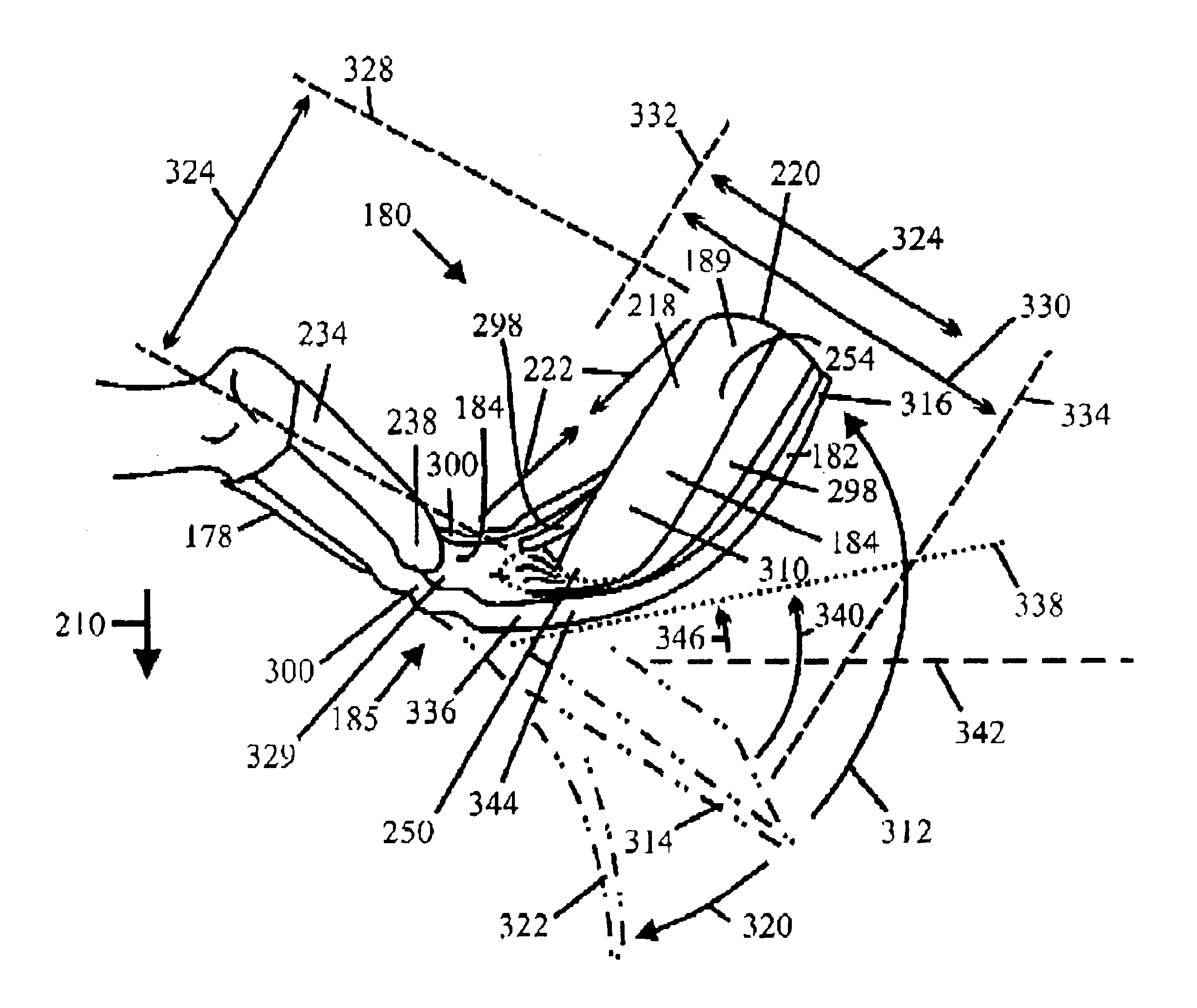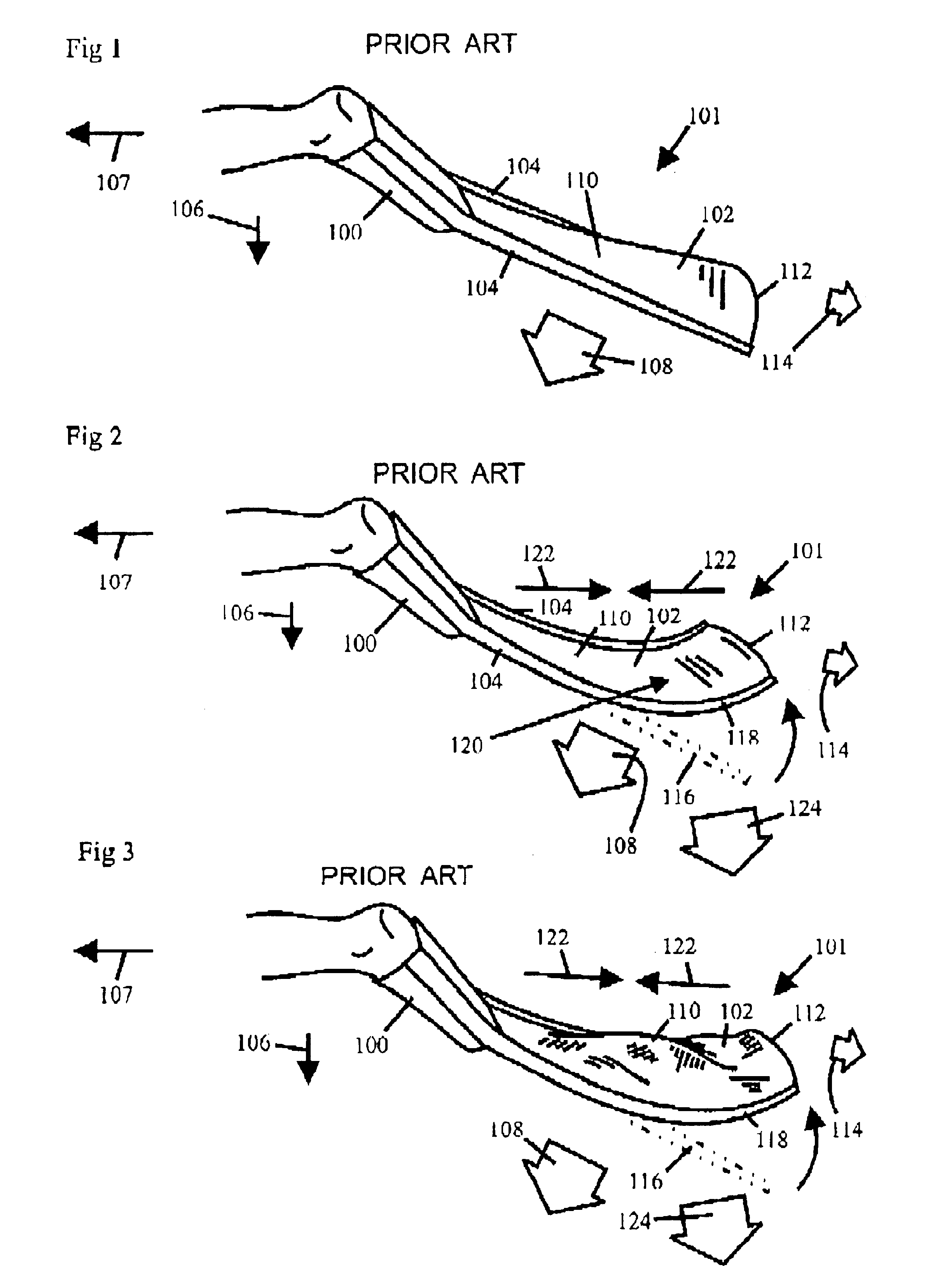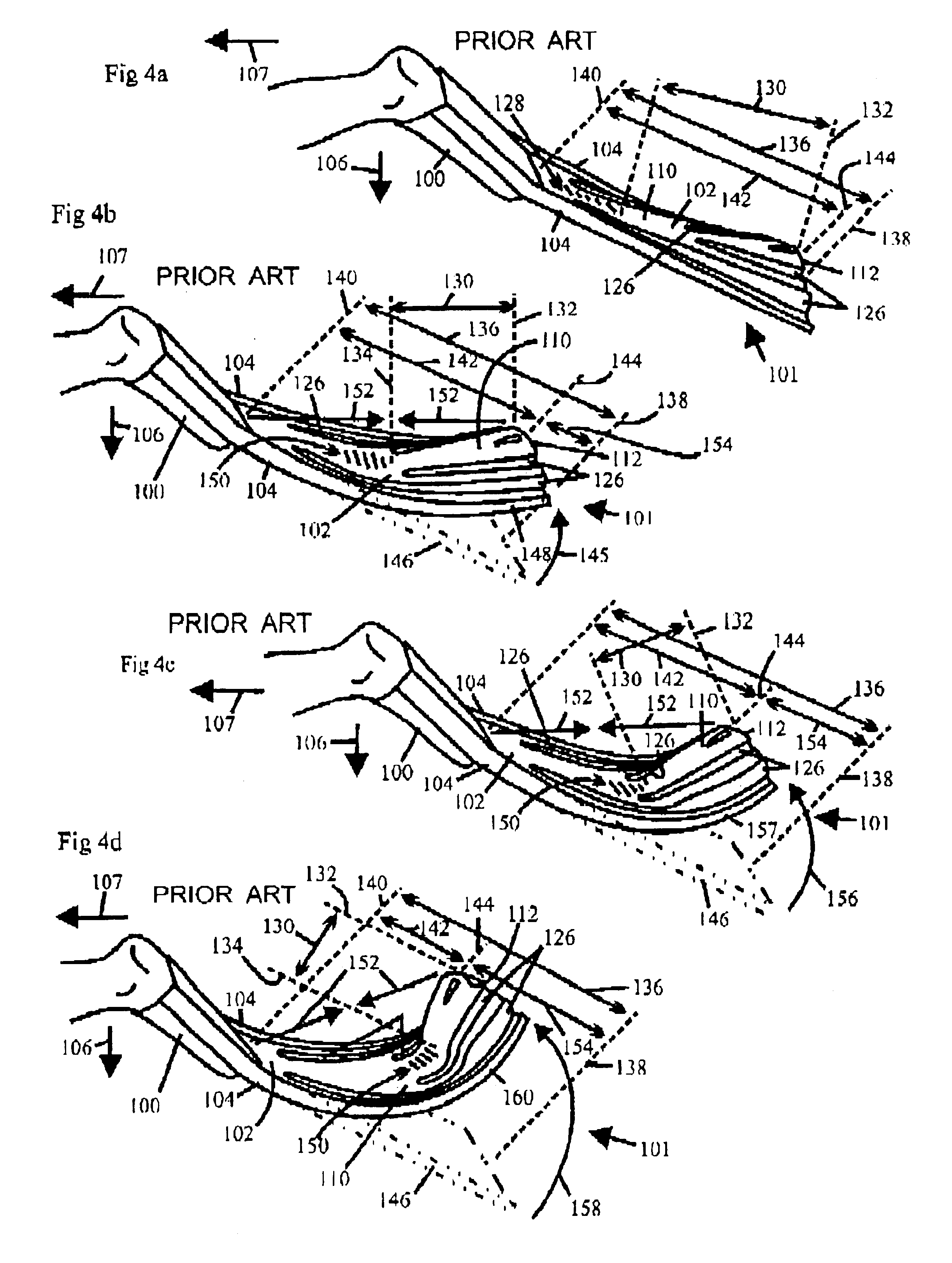High deflection hydrofoils and swim fins
a high-deflection, hydrofoil technology, applied in swimming aids, swimming fins, swimming, etc., can solve the problems of losing the scoop advantage, the depth of the collapsed scoop is very small or often negligible, and the blades using flexible blades that flex to form a scoop shape during use are vulnerable to longitudinal compression forces
- Summary
- Abstract
- Description
- Claims
- Application Information
AI Technical Summary
Benefits of technology
Problems solved by technology
Method used
Image
Examples
Embodiment Construction
. 1
[0051]FIG. 1 shows a prior art swim fin that does not deflect around a transverse axis. The swim fin has a foot pocket 100 and a blade region 101. Blade region 101 has a blade 102, and two stiffening members 104. The swimmer is kicking the swim fin in a kick direction 106 with the intention of moving in a travel direction 107. In this example, stiffening members 104 are very rigid and do not flex significantly around a transverse axis during use. Blade 102 is sufficiently flexible to bow between stiffening members 104 to form a scoop shape during use. Most of the water along blade 102 is moved in a flow direction 108, which is shown by a large arrow. Flow direction 108 is perpendicular to the lengthwise alignment of blade 102 and stiffening members 104. Flow direction 108 is seen to be aimed in a downward direction that is angled in the wrong direction for propelling in travel direction 107. Blade 102 is seen to have a lee surface 110 and a forward edge 112 that is bowed to form ...
PUM
 Login to View More
Login to View More Abstract
Description
Claims
Application Information
 Login to View More
Login to View More - R&D
- Intellectual Property
- Life Sciences
- Materials
- Tech Scout
- Unparalleled Data Quality
- Higher Quality Content
- 60% Fewer Hallucinations
Browse by: Latest US Patents, China's latest patents, Technical Efficacy Thesaurus, Application Domain, Technology Topic, Popular Technical Reports.
© 2025 PatSnap. All rights reserved.Legal|Privacy policy|Modern Slavery Act Transparency Statement|Sitemap|About US| Contact US: help@patsnap.com



